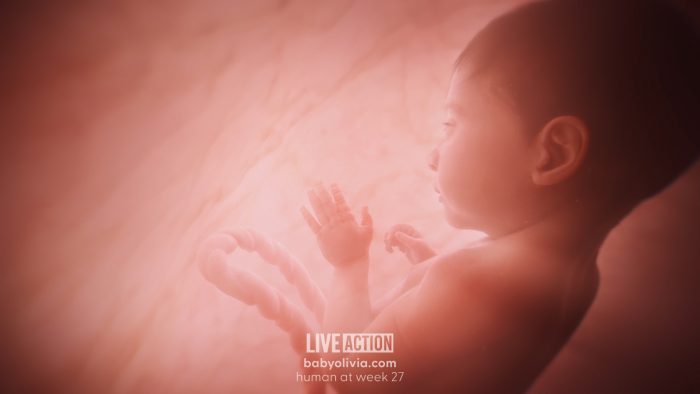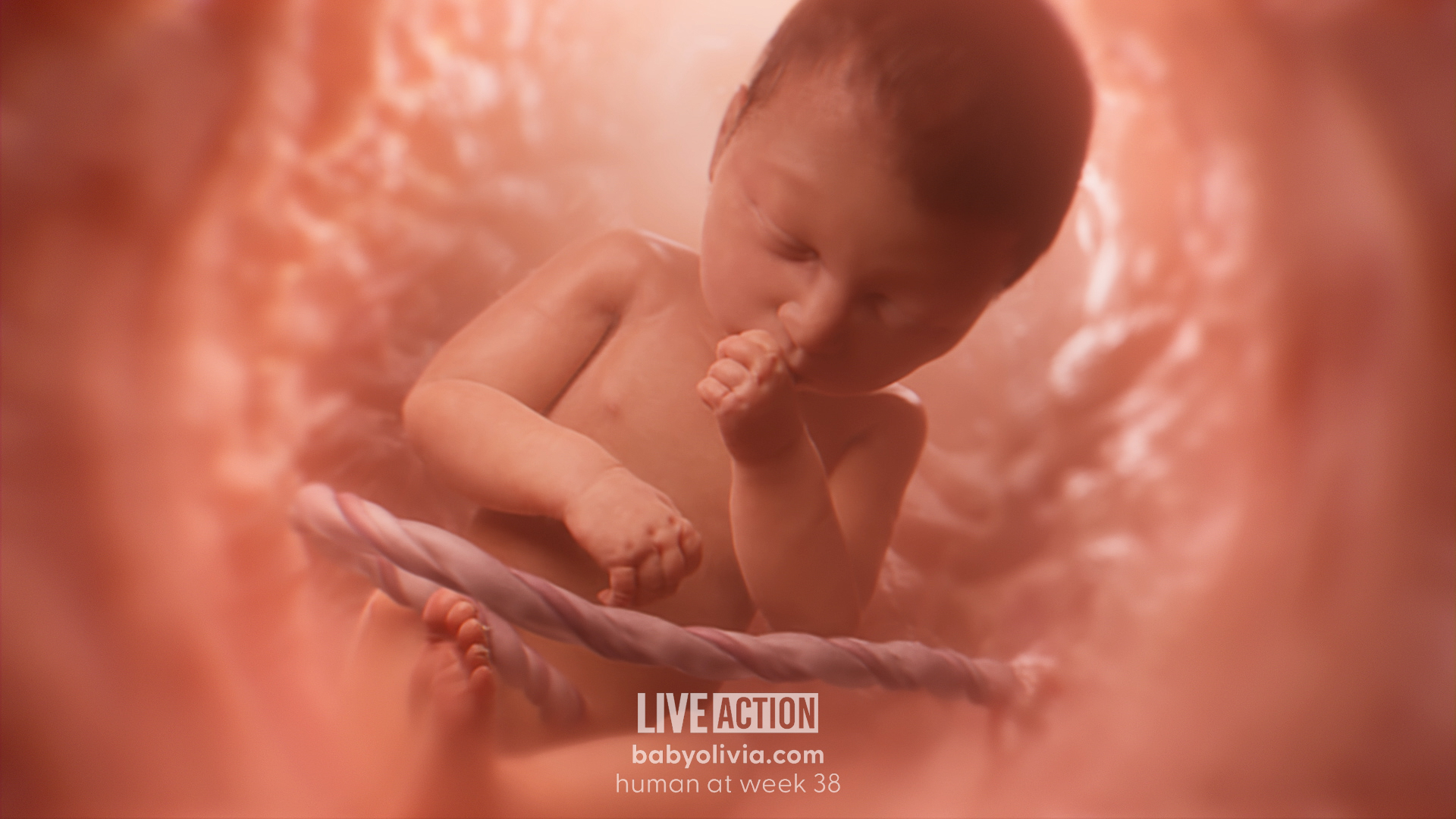Live Action’s Baby Olivia project highlights the remarkable journey of life that takes place before birth. Not only does Baby Olivia show how preborn children develop physically, she can offer a glimpse into how they development mentally. Brain wave activity first begins at just over six weeks post-fertilization, and as a preborn child’s brain develops in the womb, she will learn the sound of her mother’s voice, and even her parents’ musical taste. After birth, she will be able to recognize these sounds, including lullabies. Studies using ultrasound and magnetic field scanners reveal the consciousness that preborn children have.
How preborn babies hear
A 2017 study from the University of Kansas found that the brain starts building a child’s foundation of language while she is still in the womb. Preborn children were read a passage in English and a passage in Japanese at about eight months gestation, and researchers found that the preborn babies’ heart rate changed upon hearing the Japanese passage, because the language was so different from their mother’s native English. Their heart rates did not change when the English passage was read to them. Two dozen women and their preborn children participated in the study with a fetal biomagnetometer that fits over the mother’s abdomen and more precisely reads heartbeat, breathing, and movements.
“Fetuses can hear things, including speech, in the womb,” explained associate professor of linguistics and lead for the study Utako Minai. “It’s muffled, like the adults talking in a ‘Peanuts’ cartoon, but the rhythm of the language should be preserved and available for the fetus to hear.”
READ: Meet Baby Olivia: Live Action releases groundbreaking project showcasing fetal development
Preborn children are actually learning their native language, becoming sensitive to the rhythm of languages and even music, as researchers found in 2015. That study, conducted by the Institut Marquès in Spain, found that “preborn babies can hear and respond to music much sooner than previously believed.” The researchers scientifically proved that a preborn baby can detect and respond to sounds and music at just 16 weeks, but research also shows that loud noises — over 115 dBA — can actually damage a preborn child’s hearing.
“The fetal brain is developing rapidly and forming networks,” said Kathleen Gustafson, a research associate in the Department of Neurology at the Hoglund Brain Imaging Center and researcher for the University of Kansas study. “The intrauterine environment is a noisy place. The fetus is exposed to maternal gut sounds, her heartbeats and voice, as well as external sounds. Without exposure to sound, the auditory cortex wouldn’t get enough stimulation to develop properly.”
How preborn babies see
The cornea, iris, pupil, lens, and retina have all begun to develop by about five weeks post-fertilization, according to the Endowment for Human Development (EHD). Research from Radboud University shows that a preborn child’s brain responds to flashes of light. The study used ultrasound images and magnetoencephalography, which measures magnetic fields coming from the womb. By flashing lights through the mother’s abdomen and measuring the baby’s brain responses, the researchers found that preborn children reacted to those flashes of light. This is believed to begin at about week 16.

According to EHD, rapid eye movement, or REM, begins in preborn children at about 20 weeks post-fertilization, which is what takes place when people are dreaming. By 24 weeks, the baby’s eyes open and the blink-startle response begins, though Professor Stuart Campbell believes it should more accurately be termed “squint-startle” for preborn children since their eyes are not usually fully open. Much as children and adults have a blink response to a sudden noise, a preborn child also responds to a loud noise by “blinking.”
READ: 5 ways pro-lifers can use Live Action’s Baby Olivia video to spread the pro-life message
Rather than being in a completely dark environment in the womb, a preborn child spends most of the pregnancy able to see light through her mother’s abdomen. In fact, a 2013 study published in the journal Nature found that preborn children actually need light in the womb in order to develop healthy eyes. Though once believed most eye development stages occurred after birth, researchers now know that a sufficient number of photons must enter the womb to activate a protein called melanopsin that helps trigger normal development of blood vessels in the eyes and retinal neurons.
“We have identified a light-response pathway that controls the number of retinal neurons,” said Richard Lang, researcher in the Division of Pediatric Ophthalmology at Cincinnati Children’s Hospital Medical Center and co-author of the study. “This has downstream effects on developing vasculature in the eye and is important because several major eye diseases are vascular diseases.”
How preborn babies move
Preborn babies begin to move very early in pregnancy, though a mother won’t feel that movement until at least 14 weeks. As the baby grows, the movements will change and kicks will grow stronger. A 2018 study found that kicking helps a preborn child “map” his or her body and explore the environment. From the first to the third trimester, as the brain develops, the preborn child’s movements change from rolling to distinctive kicks, helping the development of spatial sense.
“Spontaneous movement and consequent feedback from the environment during the early development period are known to be necessary for proper brain mapping in animals, such as rats. Here we showed this may be true in humans, too,” explained Lorenzo Fabrizi, PhD, the lead researcher in the study.
Parents can use a preborn child’s ability to see, hear, and move to bond with the baby before birth. Playing music, singing to the baby, and talking to the baby will all help her develop her senses and language. She’ll recognize her parents’ voices after birth along with the music they played for her. All of this research and information proves that preborn babies are not inanimate objects floating unconsciously in the womb, but living, active humans in the first stages of development which continues after birth — just like Baby Olivia.
“Like” Live Action News on Facebook for more pro-life news and commentary!







